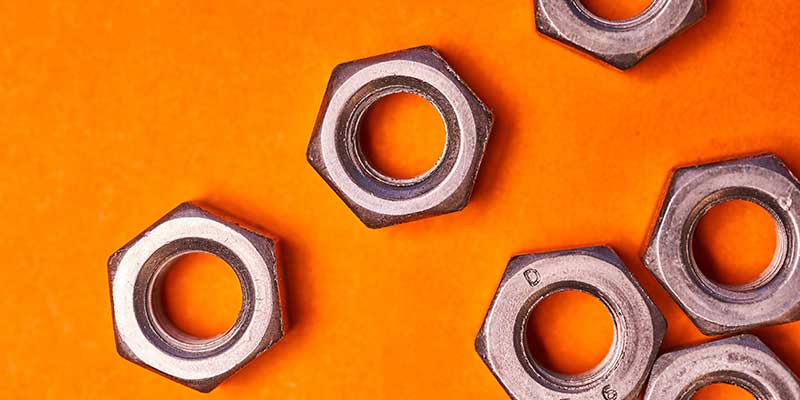
How Counting Scales Count
Counting scales are great time savers that also improve the accuracy of counts when the objective is to ship or receive X numbers of widgets. They are also great for inventory management because they allow you to quickly determine how many widgets are in stock and when it is time to order more.
How do Piece Counting Scales Count?
Keep in mind that a piece counting scale can be programmed to determine the count of a number of products that are kept in the scale’s internal memory but each product must be the same. You must separate bolts from nuts, (and lock washers while we’re at it) not combine them unless you are counting assembled nuts, bolts and lock washers. And all bolt, nut and lock washer assemblies being counted must be the same. A counting scale with an internal memory of 100 items can store data for up to 100 different items as long as each item is the same.
How does a piece counting scale do this?
You first must establish a reference quantity. Sticking with our example, a known quantity of hex nuts is placed on the counting scale and the quantity entered. The scale then calculates the weight per piece. Accuracy is improved with a larger number of pieces because the scale will calculate the average weight, minimizing the influence of weight variations of individual pieces. A sample of 10 pieces is a good minimum, but the smaller the pieces the larger the sample should be because adhering oils and other contaminants will influence the weight.
Note that if you are counting small items you should pay attention to the scale specification regarding minimum piece weight. In these instances you also might want to put samples into a container. When doing this you must tare the scale to discount the container weight then add the samples to the container. All Kern scales such as the Kern KB-N balance available from Tovatech have a tare key on the control panel.
Reference balances (see below) used to establish a reference quantity for a particular item can be connected to bulk scales such as the Kern FKA 60-K4 and data transferred. This makes stock keeping a snap. Storage bins of products, hex nuts for example, and with bin weight tared are placed on the bulk scale that calculates the number of hex nuts in stock. If each stock item has a bar code the bar code reader will identify the item to the scale. For more on this see our post on inventory management systems.
A Note on Counting Scale Resolution
Internal resolution when applied to counting scales indicates how many units into which it divides the total capacity of the scale. It can also be described as points. For example the Kern CFS counting scale with a 100-item memory has a counting resolution of 75,000 points or parts. This particular model is available in 6 maximum weight capacities, each of which can be divided into 75,000 points. The model with a 30 kg maximum range will have an internal resolution of 30/75,000 and all weights are calculated on this basis. The weight display or readout for this scale, however, is not to this degree of accuracy but rounded to 0.5g, which is also the minimum piece weight for the model. The readout is also called the external resolution. As you can see from this example, the internal resolution may differ from the displayed external resolution.

Setting up a Counting Scale System
When setting up a counting scale system you’ll always need a reference balance as referred to above to determine the weight per piece. In many instances – such as counting relatively small quantities of relatively lightweight products – the reference balance may be all that you need.
As quantities or weight increases and you are keeping stock, receiving or shipping heavier items or larger amounts of small items you’ll need to transfer reference scale data via a bridge – an interconnect – to a platform scale capable of handling the load. As a stand-alone the platform scale is not used in these instances to establish a reference weight for the parts but uses reference balance data to determine an accurate parts count.
Something to keep in mind when pondering the purchase of parts counting scales: Buy the scale or system that can accommodate the maximum weight of the batches to be counted as well as the minimum weight of the individual pieces.
As a final point, this post is built around counting nuts, bolts and similar items. If you are keeping track of or counting extremely lightweight products you might want to consider an analytical balance with piece counting capabilities. An example is the KERN ABS 120-4N analytical balance with a capacity of 120 g, 0.1 mg readout, and minimum piece weight of 1 mg for counting.
The scientists at Tovatech are ready to help you decide on a piece counting system tailored to your needs. Please contact us for an in-depth discussion on the topic.